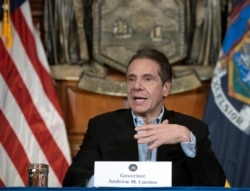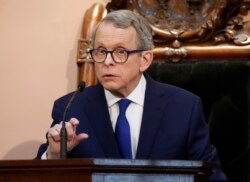New national guidelines were unveiled Monday by the federal government that place the onus on the 50 states to conduct testing for COVID-19.
“Testing plans and rapid response programs will be federally supported, State managed, and locally executed,” according to a documented titled: Blueprint for Testing Plans and Rapid Response Programs.
The federal government is to “act as the supplier of last resort,” the document notes.
Governors of the states were briefed by President Donald Trump and members of his administration earlier in the day on a conference call.
The governors are “as thrilled as they can be” and have everything they need, Trump asserted during a Rose Garden news conference later Monday.
During the event, heads of several national pharmacy retail chains said they planned to double or triple capabilities to conduct COVID-19 testing in weeks.
“The testing is not going to be a problem at all,” for states re-opening their economies, Trump said.
“We recommend that they do it as quickly as possible, but safely,” the president added.
Some states are saying there is still not an adequate testing capacity in place to properly monitor the extent of the virus.
A number of governors have also hesitated to reopen because they are worried that the number of coronavirus cases in their states will rebound or increase if social distancing is prematurely relaxed.
New York Governor Andrew Cuomo, earlier Monday, told reporters that the extent and timing for relaxing guidelines in his state — the hardest hit by the virus — will be made based on rates of hospitalizations, antibody testing, diagnostic testing and data on infection rates. He said officials across the state also need to ensure there are adequate numbers of workers to trace the contacts of infected people, enough places to isolate those who have been infected and enough hospital capacity.
The governor of the most populous U.S. state, Gavin Newsom of California, also facing pressure from industry, said Monday he will commence “digital roundtables” with workers, small-business owners and other employers about reopening plans.
“The hope and expectation is that we’ll be in a position in a number of weeks to make meaningful modifications, but again the data will guide that, the indicators will guide that,” Newsom said.
In the Midwestern U.S., Ohio’s Mike DeWine is among the governors in that part of the country moving forward with partial reopening plans.
DeWine announced Monday that retail businesses and some service businesses could start reopening from May 12, as long as workers wear face masks and take other precautions.
Trump, on Monday in the Rose Garden, also pushed for schools to reopen, “even if it’s for a very short time.”
According to Trump, “in terms of what this vicious virus goes after, young people seem to do very well.”
While COVID-19 kills the elderly and those with pre-existing medical conditions in a higher proportion than people in younger age brackets, there have also been cases of children who have died after exposure to the novel coronavirus.
Trump again Monday blamed China for the pandemic and said the United States government is “doing very serious investigations” as “we are not happy with China.”
COVID-19 “could have been stopped at the source,” Trump said the U.S. government believed. “It could have been stopped quickly and it wouldn’t have spread all over the world.”
Trump had indicated via Twitter on Saturday that he was done speaking to the media at such briefings, stating they were not “worth the time & effort.”
A scheduled press briefing by the White House coronavirus task force, however, was put on Monday’s White House schedule before being canceled and then re-scheduled as a presidential news conference.
Monday’s event lasted 55 minutes, among the shorter of presidential briefings during the coronavirus crisis.
The president was widely ridiculed last week after he suggested looking into whether inserting light and disinfectants into the human body could fight the coronavirus.
There are more than 3 million confirmed COVID-19 cases in the world — about one-third of them in the United States, the country with the most reported infections.
The number of U.S. fatalities from the coronavirus exceeds 55,000.
Trump on Monday predicted the ultimate U.S. death toll would be between 60,000 and 70,000.
A week ago, the president had predicted the number of fatalities would be between 50,000 and 60,000.
Patsy Widakuswara contributed to this report.










